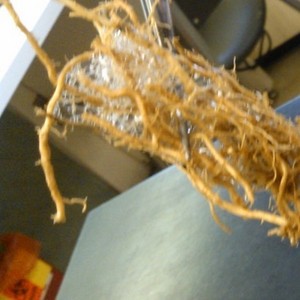DNA analysis strategy aids in study of biofuel feedstocks

Great Lakes Bioenergy Research Center
March 19, 2014
BY Chris Hanson
Researchers from Michigan State University, U.S. Department of Energy Joint Genome Institute and Lawrence Berkeley National Laboratory published the largest soil DNA sequencing effort.
“The Great Prairie represents the largest expanse of the world’s most fertile soils, which makes it important as a reference site and for understanding the biological basis and ecosystem services of its microbial community,” said James Tiedje, distinguished professor at the Center for Microbial Ecology at Michigan State University. “It sequesters the most carbon of any soil system in the U.S. and produces large amounts of biomass annually, which is key for biofuels, food security and carbon sequestration.”
Advertisement
Advertisement
During the study, MSU researchers sought to compare the microbial populations of different soils sampled from sites that were once native prairie with 100 years of agricultural cultivation. The experiment yielded nearly 400 billion letters of code, which amounts to more than 130 human genome equivalents. Researchers C. Titus Brown and Adina Chuang Howe used a compression method, similar to that of transferring images through the internet, which allowed a substantial amount of data to be discarded without the actual data content being degraded. “These results still continue to stun me,” said Brown. “What this gives us is a two to 200-fold decrease in computational requirements for the actual biological analysis.”
After the study, the researchers at the Great Lakes Bioenergy Research Center applied the huge data processing method to study three, biofuel crops, corn, miscanthus and switchgrass and yielded one terabase of sequence data. “For those samples, we learned the genetic diversity is very high in the rhizosphere of those plants,” said Tiedje. “The two perennial plants have similar microbial and gene content and is different from the corn rhizosphere.”
Advertisement
Advertisement
By learning more about the rhizosphere of the biofuel crops, microbial populations and gene content the researchers hope to discover methods that may make biofuel crop production more sustainable in marginal soil, Tiedje explains. “We’re focusing, in this case, the nitrogen cycle genes because nitrogen is an input cost you would want to minimize and maximize the cycling of nitrogen in its native system.”
The original prairie study was published in the March 14, 2014 issue of Proceedings of the National Academy of Sciences.
Related Stories
The USDA significantly increased its estimate for 2025-’26 soybean oil use in biofuel production in its latest World Agricultural Supply and Demand Estimates report, released July 11. The outlook for soybean production was revised down.
U.S. fuel ethanol capacity fell slightly in April, while biodiesel and renewable diesel capacity held steady, according to data released by the U.S. EIA on June 30. Feedstock consumption was down when compared to the previous month.
The U.S. EPA on July 8 hosted virtual public hearing to gather input on the agency’s recently released proposed rule to set 2026 and 2027 RFS RVOs. Members of the biofuel industry were among those to offer testimony during the event.
The USDA’s Risk Management Agency is implementing multiple changes to the Camelina pilot insurance program for the 2026 and succeeding crop years. The changes will expand coverage options and provide greater flexibility for producers.
The USDA’s National Agricultural Statistics Service on June 30 released its annual Acreage report, estimating that 83.4 million acres of soybeans have been planted in the U.S. this year, down 4% when compared to 2024.
Upcoming Events










